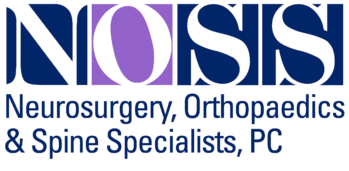Understanding the Differences: Ligaments vs. Tendons
In the world of sports medicine, injuries to ligaments and tendons are common, yet there often exists confusion about their roles and the nature of the injuries they sustain. Both ligaments and tendons are crucial connective tissues in the body, but they serve different functions and are prone to different types of injuries. Here’s a comprehensive look at these two types of tissues, their injuries, treatment options, and advice on what to do if you suspect such an injury.
Ligaments vs. Tendons: What’s the Difference?
Ligaments are tough, elastic bands of tissue that connect bones to other bones at joints. Their primary role is to provide stability by preventing excessive movement that could lead to joint injury.
Tendons, on the other hand, are strong, non-elastic cords that connect muscles to bones. They help move the bone or structure attached to the muscle, thus playing a crucial role in facilitating movement by transmitting the force from the muscle to the bone.
Types of Injuries
Both ligaments and tendons are susceptible to strains and tears, but the context in which these injuries occur differs:
- Ligament Injuries often occur from a sudden, traumatic event such as a twist or impact, which can overstress the ligament leading to sprains or tears. Common examples include ACL tears in the knee or ankle sprains.
- Tendon Injuries can result from overuse, leading to tendinitis, or from a sudden, acute incident that causes a tear, such as an Achilles tendon rupture. Overuse injuries are prevalent in sports that require repetitive motion, like running or swimming.
Common Treatments
Treatment for ligament and tendon injuries typically follows a similar protocol, often starting with conservative methods:
- Rest and Ice: Initial treatment usually involves resting the injured area and applying ice to reduce swelling and pain.
- Compression and Elevation: These methods further decrease swelling and aid in recovery.
- Physical Therapy: Rehabilitation is crucial for both types of injuries to restore function, strengthen the surrounding muscles, and improve flexibility.
- Medications: Pain relievers and anti-inflammatory drugs can help manage pain and inflammation during the healing process.
- Surgery: In severe cases, such as complete tears of ligaments or tendons, surgical intervention may be necessary to repair the damage.
Recognizing the Differences in Symptoms
While symptoms of ligament and tendon injuries can be similar, there are key differences:
- Ligament injuries often result in joint instability, significant swelling, and bruising around the joint.
- Tendon injuries might not affect joint stability but can cause swelling and pain localized around the affected tendon, often worsening with movement of the connected muscle.
Demographics Most Affected
Athletes and active individuals are the most commonly affected groups, particularly those involved in sports that require repetitive movements, sudden changes in direction, or contact sports. However, age also plays a role; older adults are more susceptible to tendon injuries due to decreased tendon elasticity, while younger individuals may be more prone to ligament injuries due to higher participation in high-risk sports.
What to Do If You Suspect an Injury
If you think you have injured a ligament or tendon:
- Stop any activity immediately to prevent further damage.
- Apply ice to the injured area to reduce swelling and pain.
- Seek medical advice from a sports medicine professional or orthopedist. Proper diagnosis often involves a physical exam and imaging tests like MRI or ultrasound to determine the extent of the injury and the most appropriate treatment.
Understanding the nuances between ligaments and tendons and their related injuries can help in effectively managing these conditions and preventing future issues. Whether through gradual rehabilitation or necessary surgical interventions, the goal is to restore full function and return to normal activities safely.

